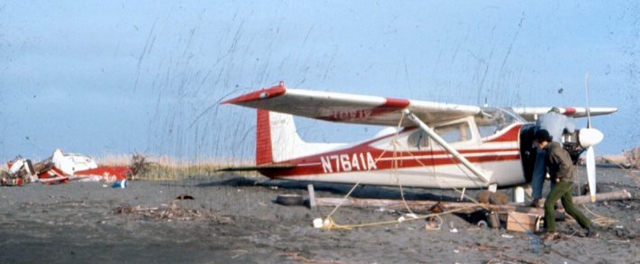
Repairing Herman Kurth's Cessna 180 N7641A
Day 14 at Yahtse River Camp
Alaska 1971
Photo: © Herman Kurth
While most of these photos are not of Seabees, they
will give an idea what it is like to get a Cessna 180 up and running
again, after a tire blew on a beach landing. Herman had to fly in a
horizontal stabilizer and 2 elevators with an 180 on floats plus all the
supplies needed for a 2 week stay. Luckily the landing area on the
Yahtse River near Icy Bay, Alaska,
was only 100 yards away. There were at least 6 large brown bears
in the immediate area that he had to keep a close eye on... After 2
weeks of hard work alone, his friend Jim Hayton flew in a couple of mags and
Herman made
it back to Yakutat.
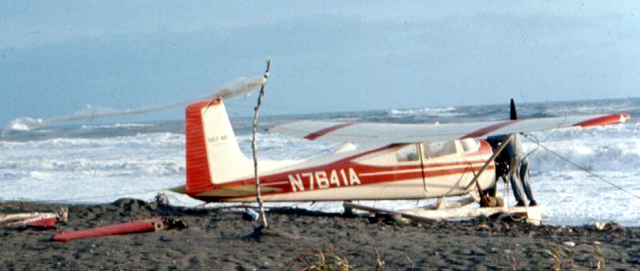
A windy day at Walter Johnson's
Yahtse River Camp, Alaska, 1971
Jim Hayton is installing a magneto...
Photo: © Herman Kurth
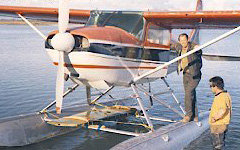 Many years ealier, in 1957, Herman had an engine
problem while flying his Ryan PT 22 and wrecked it on emergency landing.
The Ryan was stored for several years in a shed. Near where it was
stored lived a 12 year old boy by the name of Jim Hayton. He liked to
sit in the Ryan and pretend he was flying it. When Jim was 17 years old
(1965), Herman took Jim with him on a trip from Mt. Vernon (WA) to
Yakutat, Alaska, in SeaBee N6056K. While they were in Yakutat, Herman
and Jim did some maintenance work on Cessna 180s owned by a life long
friend of Herman, Dick Nichols, who owned Gulf Air Taxi in Yakutat..
Many years ealier, in 1957, Herman had an engine
problem while flying his Ryan PT 22 and wrecked it on emergency landing.
The Ryan was stored for several years in a shed. Near where it was
stored lived a 12 year old boy by the name of Jim Hayton. He liked to
sit in the Ryan and pretend he was flying it. When Jim was 17 years old
(1965), Herman took Jim with him on a trip from Mt. Vernon (WA) to
Yakutat, Alaska, in SeaBee N6056K. While they were in Yakutat, Herman
and Jim did some maintenance work on Cessna 180s owned by a life long
friend of Herman, Dick Nichols, who owned Gulf Air Taxi in Yakutat..
During their stay in Yakutat, Jim developed a passion
for the Cessna 180. On returning home he scrounged up enough parts from
several wrecked 180s and put a 180 together the next year. He later sold
the 180 to a missionary in Mombasa, Kenya. When it arrived in Mombasa
Jim uncrated it, assembled it and checked out the new owner in
it.
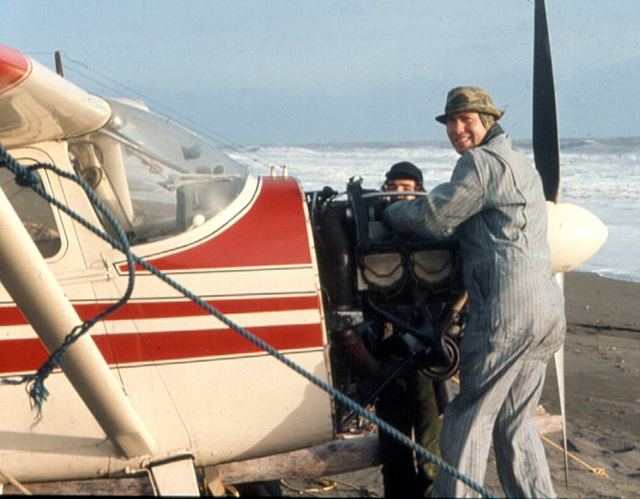
Jim Hayton and Larry Bemis
'Yahtse River Camp' near Icy Bay, Alaska, 1971
Photo: © Herman Kurth
Over the years Jim has had a lot of experience retrieving downed
airplanes from the Alaska bush. In 1978 Jim Hayton bought 40 acres of land about 15
miles up the Skagit river from Mt. Vernon, at Day Creek. Since then Jim
and his family have accumulated enough Cessnas, Beavers, Otters and
various other wrecks to cover several acres. The Aerial view Herman took
summer 2002 only takes in a small part of Jim's airplane 'grave yard'.
[James B. Hayton; 30578 Walberg Road, Sedro Woolley, WA 98284, USA].
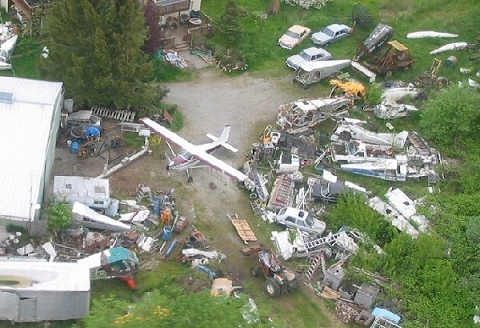
Jim Hayton's
Day Creek, WA
Photo: © Herman Kurth
He frequently lands seaplanes on the grass to do
maintenance on them. Jim Hayton's rebuild shop works
on Beavers and Cessnas primarily. When his shop is
finished working on them, he flies them off the grass strip. It is quite a
sight to see a Beaver float plane take off or land on his strip!
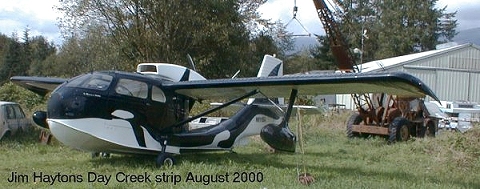
Republic Seabee N6115A (s/n 912)
Photo: © Herman Kurth
Occasionally they work on Seabees. Herman spotted the
ORCA Seabee at Jim's bush strip in August 2000. It is still
believed to be there...
Herman Kurth
e-mail